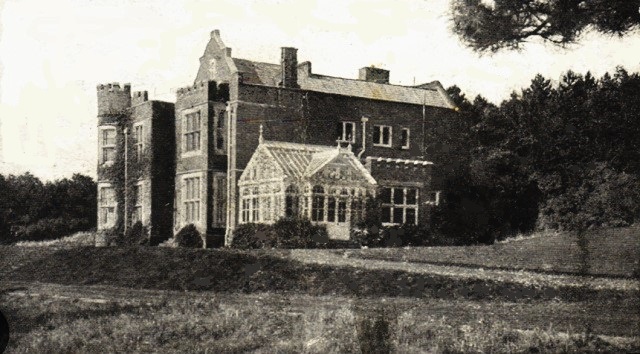
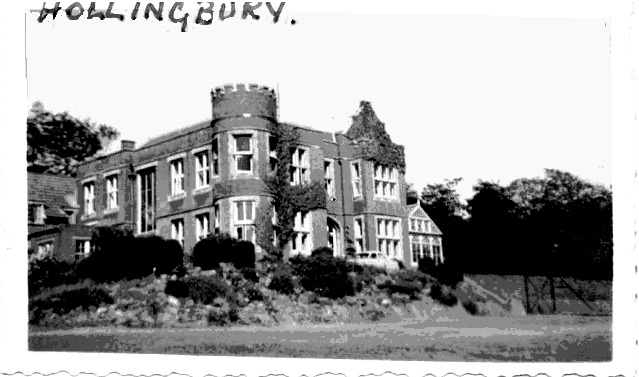
Hollingbury Court School, Brighton, England


He told me that the house had been built by a German. I noticed that it had double glazing - unusual in England at the time (two separate wooden window frames opening inwards.) When I came to live in Berlin I saw similar windows in houses of the same period.
The house featured a large stain-glass window to the staircase, made to measure in Paris, oak panelling with Ionic embellishments in the dining room, a Gothic entrance screen just beyond the main doorway and a conservatory - which housed a Myford Super 7 lathe and other goodies. It was surrounded by woodlands.
In the meantime I found out that Hollingbury Court was built by Sigismund Charles Witting, formerly Carl Sigismund Witkowsky. His father, Arnold Witkowski, was a prosperous Jewish silk merchant, living in Berlin. Sigismund emigrated to London where he made a fortune as a metal merchant. He became a naturalised Briton and in 1890 built this mansion in what were then the outskirts of Brighton. His family in Germany referred to him as "the Lord". The house was sold on the 1st of March in 1923 and he moved to Monaco where he died in 1933.
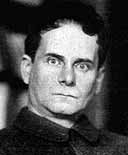
Among S.C.Witting's several siblings was Maximilian Harden, (1861-1927) born Felix Ernst Witkowski. Maximilian Harden left his troubled family at the age of 14 and became successively an actor, a theatre critic and a journalist.
In 1892, with financial help from his rich brother S.C.Witting (above), he founded his own magazine, Die Zukunft - The Future, which he published, edited and largely wrote. This brought him a national and international reputation. Harden was initially a monarchist but following Wilhelm II's contemptuous rejection of his offer of journalistic support he became an outspoken critic of the monarchy, encouraged and mentored by ex-Reichskanzler Otto von Bismarck.
In 1906 Harden published an article Wilhelm der Friedliche (Wilhelm the Peacable), insinuating that German foreign policy was negatively influenced by the "Liebenberger Circle" - named after Schloss Liebenberg, the residence of Prince Philipp zu Eulenburg-Hertefeld. He hinted that many members of the Circle were homosexual: "Eulenburg, an unhealthy late-romantic". The accusations escalated in 1907 into the "Harden-Eulenburg Affair", a series of civil trials, re-trials, courts-martial and suicides that resulted in the Kaiser turning from the relatively moderate Liebenberg Circle to more aggressive military advisers. In retrospect Harden saw his campaign as a catastrophe and a cause of Germany's entry into the Great War.
In 1922 Harden was attacked and severely injured by two members of the Freikorps (a right-wing counter-revolutionary militia) outside his house in Berlin-Grunewald, a few days after the assassination of his friend Walter Rathenau. He retired to Switzerland in 1923 where, never having fully recovered, he died in 1927. He is buried in the Friedhof Heerstrasse, Berlin, in an Ehrengrab (grave of honour.)
His rich brother, Sigismund Witting, never married and left his estate to the "S C Witting Trust" which still exists. It is administered by the Quakers and supports "school children and students in need", who live in England.
And what of his house? After its sale, five classrooms were added in 1928 and it was turned into a school:
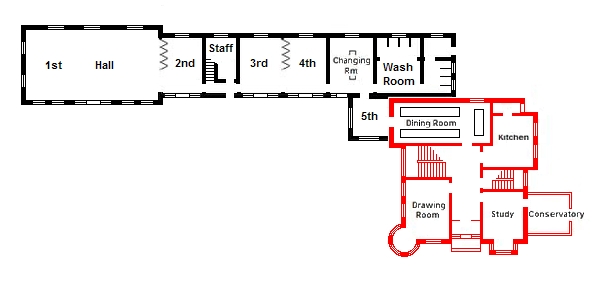 Plan of the original building (red) and school buildings added in 1928, drawn from memory and based on photos to be found on the
My Brighton and Hove website.
Plan of the original building (red) and school buildings added in 1928, drawn from memory and based on photos to be found on the
My Brighton and Hove website. 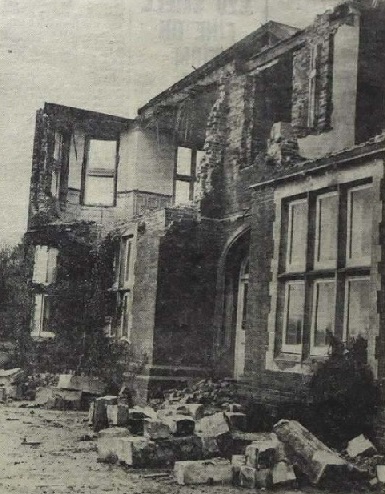
28 July 2014
to personal history